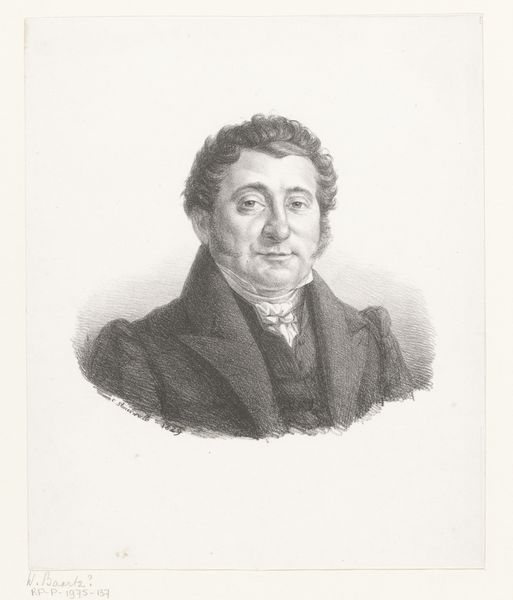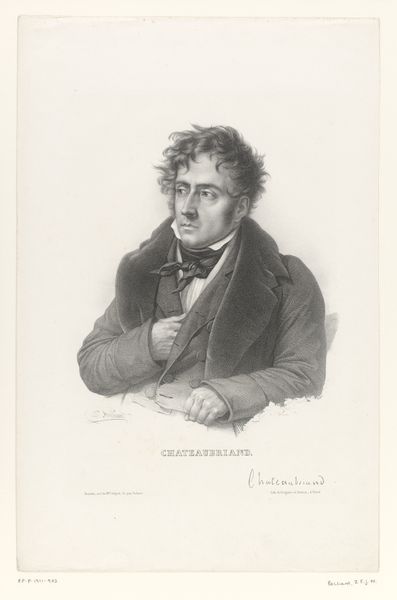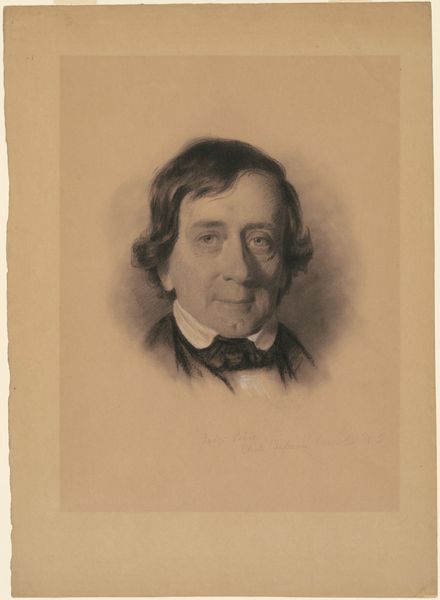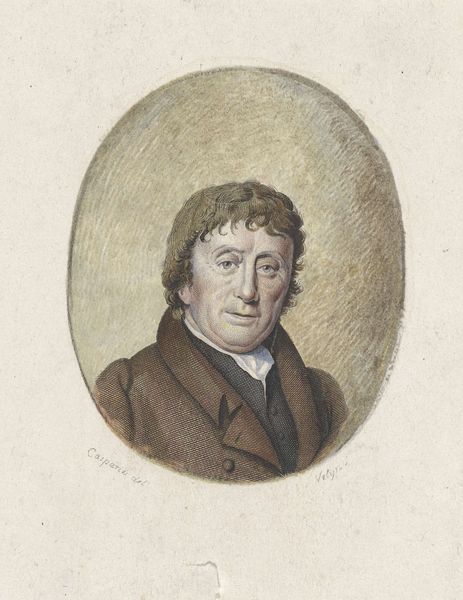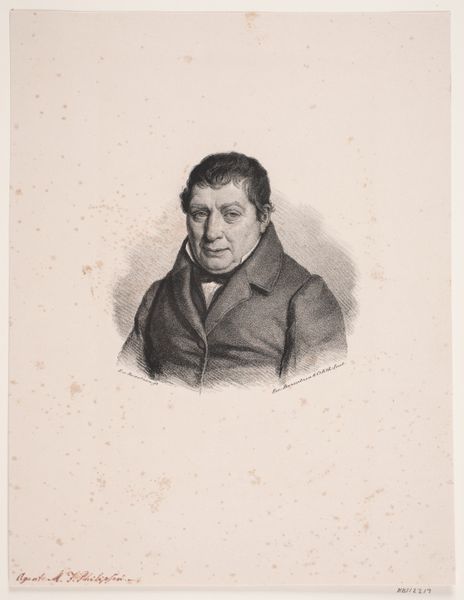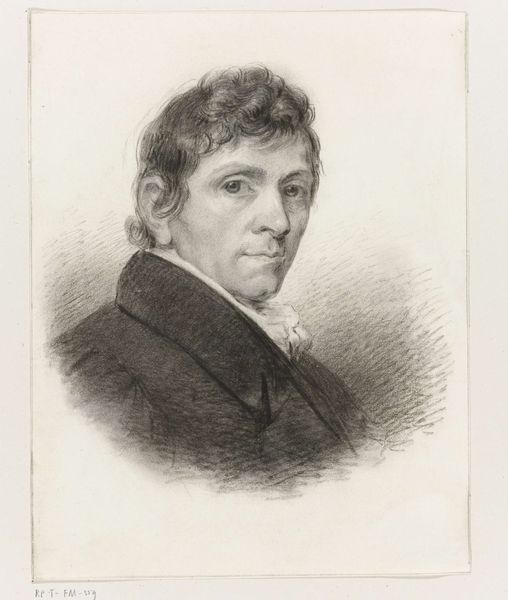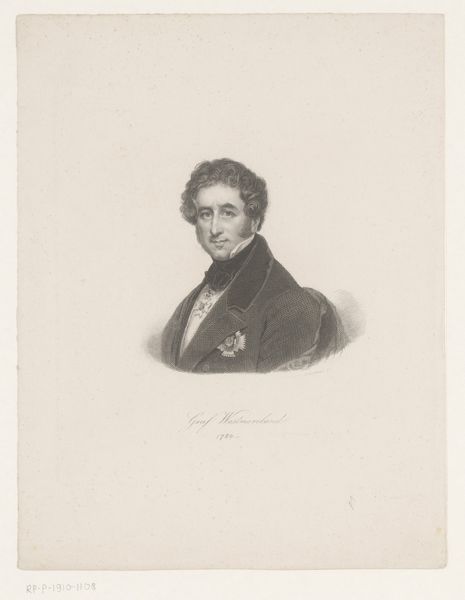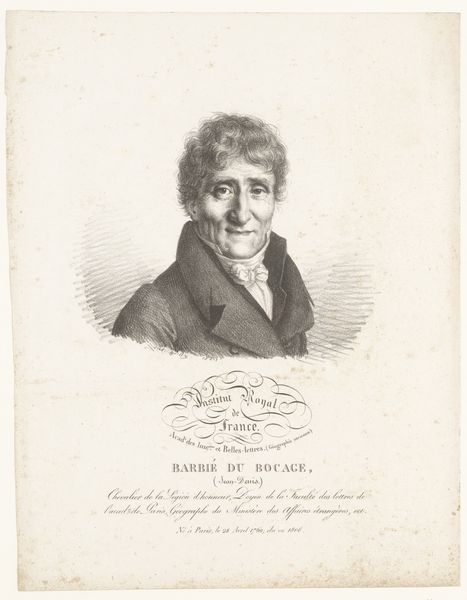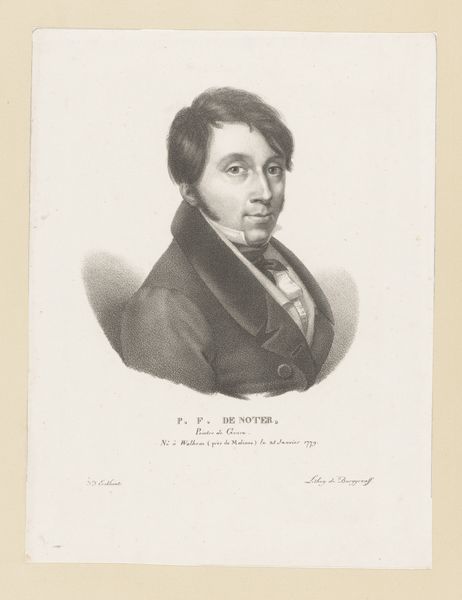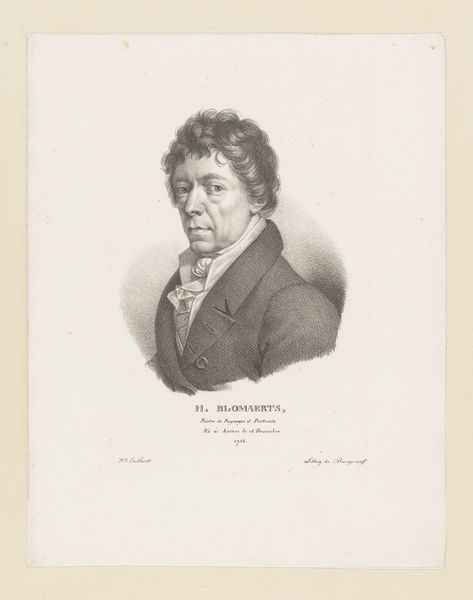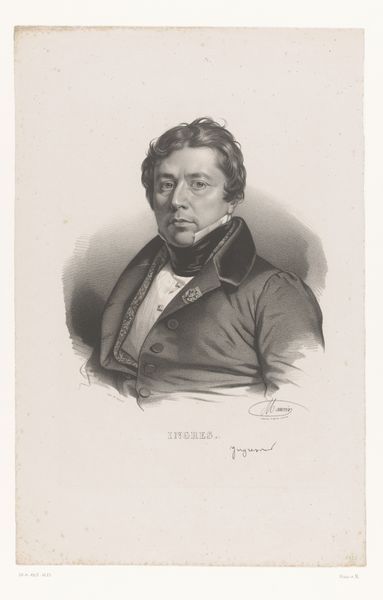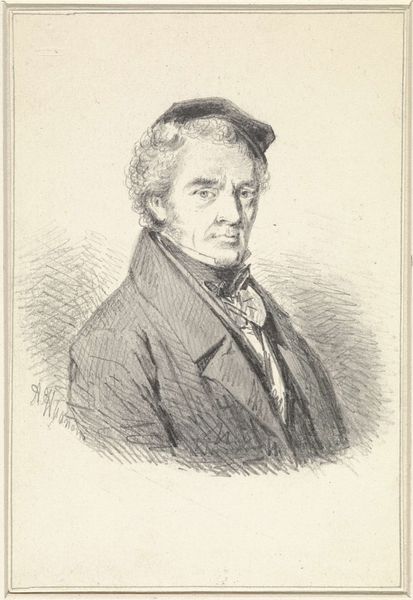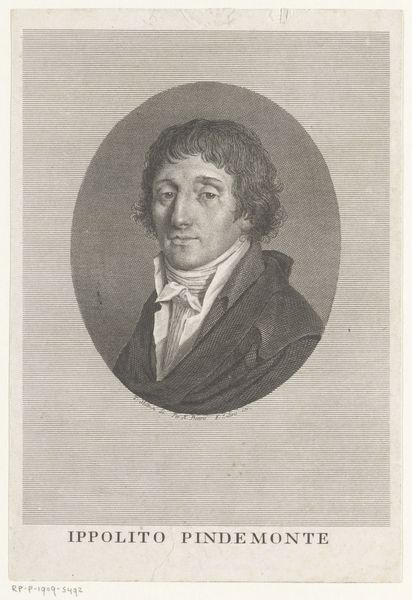
drawing, pencil
#
portrait
#
pencil drawn
#
drawing
#
facial expression drawing
#
pencil sketch
#
caricature
#
pencil drawing
#
romanticism
#
pencil
#
portrait drawing
#
realism
Dimensions: height 265 mm, width 212 mm
Copyright: Rijks Museum: Open Domain
Curator: This is "Portrait of Jacobus Koning," a pencil drawing now held at the Rijksmuseum, created sometime between 1809 and 1850 by Jean Augustin Daiwaille. What strikes you initially? Editor: There’s a certain…intensity to his gaze, wouldn’t you say? Even in pencil, Daiwaille captures a directness, almost an unease. The contrast between the loosely sketched hair and the more defined face adds to that tension. Curator: I agree. Consider the historical context: this was a time of shifting social structures, burgeoning middle class influence. Portraits like this, rendered in the accessible medium of pencil, became increasingly important in asserting individual identity and status beyond aristocratic lineage. Editor: Absolutely. Look at how Daiwaille uses light and shadow – particularly around the eyes and the set of the mouth. He achieves a three-dimensionality that gives a palpable sense of Koning's presence. Curator: Daiwaille, though lesser-known today, was working within a tradition of Dutch portraiture that, while influenced by broader European Romanticism, maintained a certain level of realism. This Koning isn’t idealized; we see the signs of age, the particular shape of his face. It suggests a move away from flattering likenesses. Editor: It’s the details that pull me in – the ruffled collar, the way the coat folds around him. And there is the very fine pencil hatching which constructs tonal variation of such subtlety. All this gives him a weight and volume, that is interesting, contrasting to how he portrays his messy hair in more light gestural, sketchy lines. Curator: We must remember the social function too. Portraits commissioned, viewed, displayed in homes and public spaces. This work presents him in the role he sees himself in. The lack of background emphasizes the person—not necessarily surroundings. Editor: Perhaps Daiwaille saw in Jacobus something more—something beyond the surface that he wanted to convey. Curator: Portraits of this kind, within their time, reflect the democratizing impulses, if it can be phrased as such, that influenced the world of artistic representations. Editor: I appreciate your perspective. For me, it's about that intense gaze and delicate lines, creating such intriguing presence. Curator: Thank you, it has given me new thoughts. I see now also a democratized world for its audiences!
Comments
No comments
Be the first to comment and join the conversation on the ultimate creative platform.
